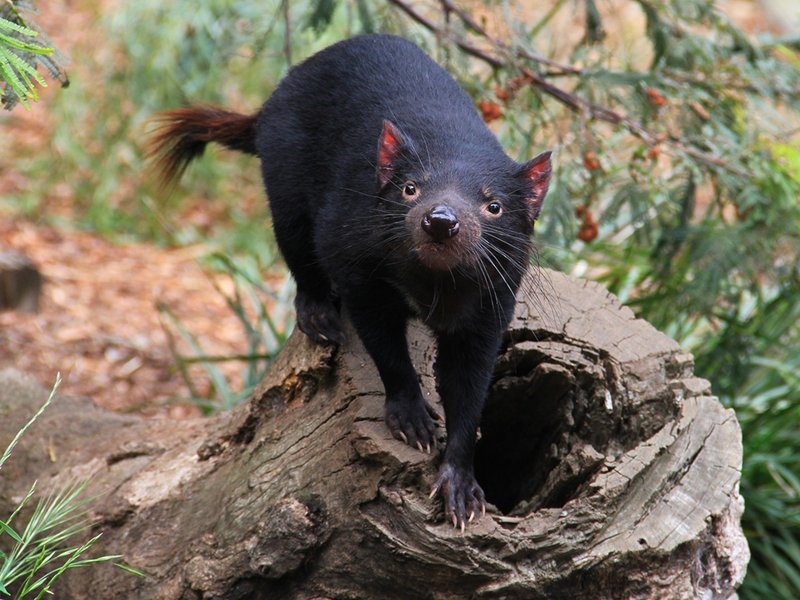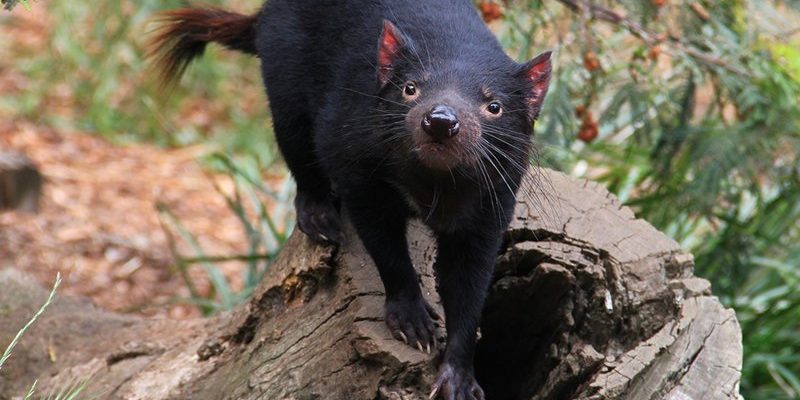
The Tasmanian devil is a symbol of wildlife in Tasmania, Australia, yet it’s facing serious threats that could lead to its extinction. Much like a rare dish that’s hard to find in a restaurant, hunting for these creatures in the wild is becoming increasingly difficult due to various factors. In this article, we’ll dig deeper into the challenges the Tasmanian devil faces, what efforts are underway to protect it, and how you can help.
What Makes the Tasmanian Devil Unique?
The Tasmanian devil is a small, stocky marsupial known for its iconic and somewhat gruff demeanor. Imagine a mix between a dog and a skunk, with a bite that could rival a pit bull’s! These creatures are nocturnal, meaning they come alive at night, rummaging through the bush for food. They’re mostly scavengers, feasting on carcasses, which is why they’re often referred to as nature’s clean-up crew.
One of the most striking features of the Tasmanian devil is its vocalization. Their growls, snarls, and screeches have a way of sending shivers down your spine. These sounds are used for communication, especially when they’re feeding or feeling threatened. Picture a bunch of angry cats in a brawl. That’s a glimpse of what it sounds like when devils are fighting over food!
Despite their tough exterior, these creatures are social and tend to gather in groups when feeding. Their unique behaviors and characteristics not only make them interesting but also essential for the ecosystem they inhabit.
Why Are Tasmanian Devils Endangered?
You might be wondering why this fascinating creature is finding itself in hot water. The main culprit behind their decline is a contagious cancer called Devil Facial Tumor Disease (DFTD). This illness is particularly distressing because it spreads through bites and affects the devils’ faces, leading to severe suffering and death. Imagine catching a cold that gradually becomes something much worse, all because it spreads through casual interactions.
In addition to DFTD, other factors are taking a toll on the Tasmanian devil population. Habitat loss due to human development and increasing roadkill accidents are significantly reducing their numbers. Imagine living in a beautiful neighborhood only to find that your home is transforming into a busy highway. Frustrating, right? That’s the reality for these animals.
Climate change also adds another layer of pressure. Changes in weather patterns disrupt their food sources and habitats. With rising temperatures, food isn’t just harder to find; the conditions also make it tough for the devils to survive.
Current Conservation Efforts
Recognizing the urgent situation, various organizations and governments are stepping up to protect the Tasmanian devil. One of the most significant efforts is the establishment of a Tassie Devil Recovery Plan, which aims to increase population numbers and reduce the spread of DFTD. This plan includes ongoing health monitoring and research to develop effective treatments.
Another promising initiative is the creation of disease-free populations in captivity. These programs involve breeding Tasmanian devils in secure environments, allowing them to flourish without the threat of DFTD. Picture a charming wildlife sanctuary where devils thrive, safe from the harsh realities of the wild.
Moreover, community awareness programs are essential. Organizations work hard to educate locals and tourists alike about the plight of the Tasmanian devil. Even small changes in behavior, like driving carefully in Tasmania’s wildlife areas, can make a difference.
How You Can Help
Feeling moved to assist the Tasmanian devil? You’re not alone! There are plenty of ways to contribute and make a positive impact. Here are some straightforward actions you can take:
- Donate to wildlife organizations: Your financial support can fuel research and conservation efforts.
- Spread the word: Share what you’ve learned. The more people know, the more help we can gather.
- Visit conservation parks: Eco-tourism helps fund preservation projects while allowing you to witness these incredible creatures up close.
- Be cautious while driving: Keep an eye out for wildlife, especially on Tasmanian roads. Slowing down can save a life.
These small actions, when combined, can lead to significant changes.
The Role of Education in Conservation
Education plays a pivotal role in conservation efforts. By learning about the Tasmanian devil and its struggles, we can foster a sense of responsibility in people. Schools and communities can introduce programs focusing on wildlife literacy, which emphasizes the importance of biodiversity.
Imagine a classroom full of kids, each discovering the magic of the Tasmanian devil. When children understand the significance of preserving such species, they’re more likely to become advocates for wildlife in the future.
Inspiring stories and experiences can influence attitudes toward conservation. Take, for example, a local ranger sharing tales of rescuing sick devils. Those stories resonate deeply, connecting individuals to the cause.
The Future for Tasmanian Devils
While the outlook for the Tasmanian devil may seem bleak, there’s a glimmer of hope. Thanks to ongoing conservation efforts and the passionate voices of individuals and organizations, there’s a chance for these unique marsupials to bounce back.
Imagine a future where the sounds of Tasmanian devils echo through the forests again, their population stable and thriving. That vision isn’t just a dream; it’s a possibility within reach.
Ultimately, protecting the Tasmanian devil requires collective action. By raising awareness, supporting conservation initiatives, and fostering a love for nature, we can help ensure that these creatures continue to roam the earth for generations to come.
As we reflect on the challenges the Tasmanian devil faces, it brings to light a broader issue—the fragility of our ecosystems and the interconnectedness of all living beings. Let’s do our part to protect this unique animal and others like it. The time to act is now.

